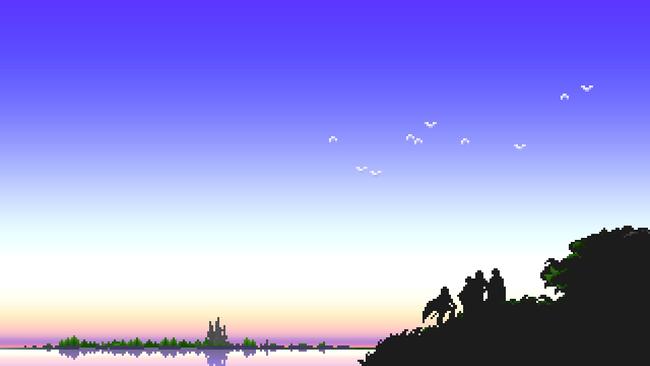
Final Fantasy 1-3 Pixel Remaster Review
The first batch of the new Final Fantasy Pixel Remaster Series has finally been released, bringing a fresh take on the first three titles to PC and mobile devices. Each of these was initially released on the Famicom in Japan and would eventually arrive in the west in one form or another. With that said, how do these latest Pixel Remaster releases stack up against the previous offerings?
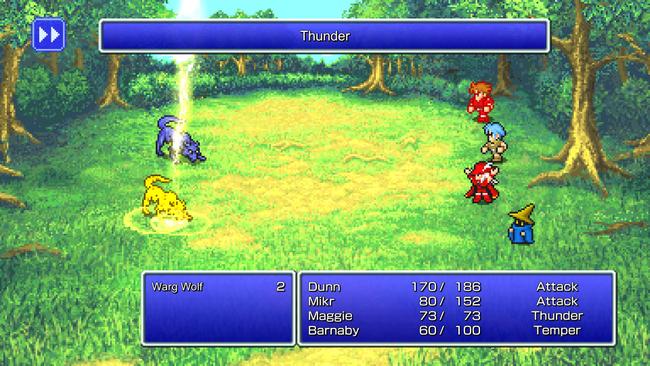
These versions presented in the Pixel Remaster Series are faithful to the original Famicom/NES offerings without many of the additions that were added in later re-releases. With Final Fantasy 1 and Final Fantasy 2, the bonus dungeons added in the Gameboy Advance and PSP versions have been omitted, and Final Fantasy III ditches the named characters from the 3D version. This will mark the first time English-speaking players will begin the game as four unnamed onion knight orphans.
Another significant change that new players may not expect with Final Fantasy 1 and Final Fantasy 3 is the disappearance of MP. Yep, that’s right; you won’t be casting spells from a pool of magic points. Instead, these games return to the original spell slots from their 8-bit counterparts. It will be instantly understandable to those who have played Dungeons & Dragons, but for others, in essence, each spell costs only one point to cast, and more powerful spells require higher-level points to use. For example, Fire is a level one spell, so you must have at least one point for level one spells to cast it. As you raise your levels, you will gain points and the ability to cast level two, three, four, all the way up to level eight spells. Each spell level has its own pool of points they pull from, and it can be annoying to adjust to, but after a little while, it shouldn’t be too much of a hassle.
While much is retained from the original versions of the games, there are still some modern conveniences and updates. You now constantly have access to a mini-map in the corner of your screen that will keep track of cities, towns, and dungeons you find on the overworld map, and this can show you where the various shops are when you are inside a city. Handy features, to be sure, and you won’t have to worry about remembering that strange button combination to bring the map up, like in other versions.
In addition to the mini-map that is always present, you can also open a larger version with more information. Specifically, this map will show you what shops are in any given place, the number of chests and treasures there are, and how many you have found. This is an excellent piece of added info for all the completionists out there.
The addition of a bestiary has become somewhat expected in Final Fantasy remasters, but I was pleasantly surprised by its upgrade this time around. Found on the main menu of each of the games, the bestiary will present a traditional list of creatures and their stats, but that isn’t all! You can also view and explore a map that shows the areas that each creature is found in, all presented in a far more visually appealing manner. Honestly, I had a lot of fun just flying around the map and checking out the visuals, and this can serve as an excellent way for newer players to take a look at the map and try to get an idea of where they may need to go next.
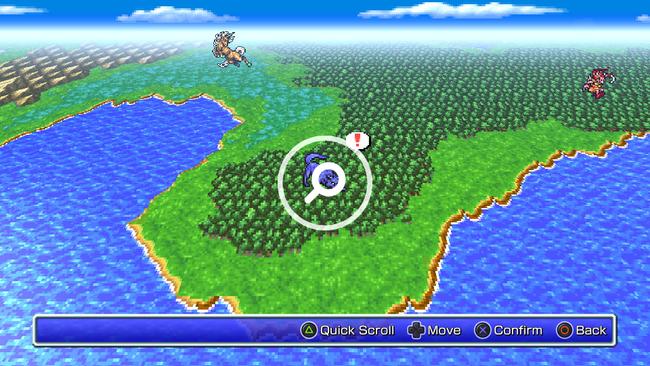
The new sprites are leaps and bounds improved over the globby messes that were the mobile Final Fantasy 5 and Final Fantasy 6 sprites. These three games have those beautiful crisp jagged pixel edges that retain the look and feel that the old games worked to convey while adding more refined touches and flourishes. This added detail comes with intricate shading and, in the case of the Final Fantasy 2 character sprites, brings them more in line with their more modern interpretations.
Environments also get a large boost in detail, and for the most part, do a great job. Occasionally, however, and I can’t put my finger on why this was, but some environments reminded me of ones I would see on a Gameboy Advance game. Perhaps it was the soft shadows or how they were presented, but some just screamed GBA to me.
Effects and spells seemed to have been handled differently from the rest, appearing almost as though they were initially 3D or particle animations but have a pixel filter placed on top. The flames of torches, zaps of thunder, or water rushing over in a fountain just seemed far too fluid and smooth to be built from the ground up as sprites. These effects do an alright job, but they just feel off to me and always stand out.
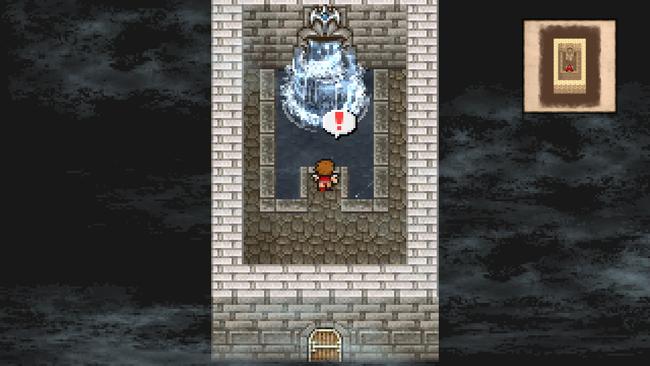
The standout star of these Pixel Remasters has to undoubtedly be the brand new arrangements of the soundtrack. Every piece of music has received an upgrade under the close supervision of the legend himself, Nobuo Uematsu, to make sure they each retain the same feel as we remember. Tracks like Final Fantasy 3’s battle theme, now with more electric guitar, got me so excited even when smacking around some simple goblins. There wasn’t a single track that I came away feeling let down, and I was always anxious to hear the next brand new arrangement. What’s even better, you can listen to them using the music player from each game's main menu screen.
With all that said, this first batch of Pixel Remasters aren’t without their issues, though, so let’s address the behemoth in the room first, the font. A source of frustration and animosity since the Pixel Remasterswere first revealed in that short 1 minute and 30-second trailer. I regret to inform you all, the basic English font is awful. It’s hard to see, it’s small, and it doesn’t fit the retro style in the least. Luckily though, I discovered a method (you can read my how-to guide here) to replace the default font with one that resembles the font present in the PSP remakes of Final Fantasy 1, 2, and 4. It makes a huge difference.

The larger strokes and thicker white characters of the fixed font fill up space more and are generally far easier to read. I can’t quite wrap my head around why they opted for this style when the better and more readable font is already present. Hopefully, this will be addressed and defaulted to in a future patch or from the outset with the later games in the Pixel Remaster series.
One other issue that plagued me, admittedly more so than even the font, was the surprising amount of screen-tearing I experienced. I encountered some rather jarring vertical tearing whenever I was moving around the world map or towns, not really while I was in combat. This problem seemed present whenever I was playing in fullscreen or borderless windowed mode, regardless of the resolution it was set to. The only fix I could find was when I played in windowed mode, which I’ve never been a big fan of. I hope this gets addressed in a future patch and isn’t an issue in the later Pixel Remaster games.
Keeping on the display issue train, I also ran into a problem where my display preferences wouldn’t save and the game would always launch in windowed mode. Even though it would read in the settings that it was Fullscreen, it would still launch at fullscreen size surrounded by a border.
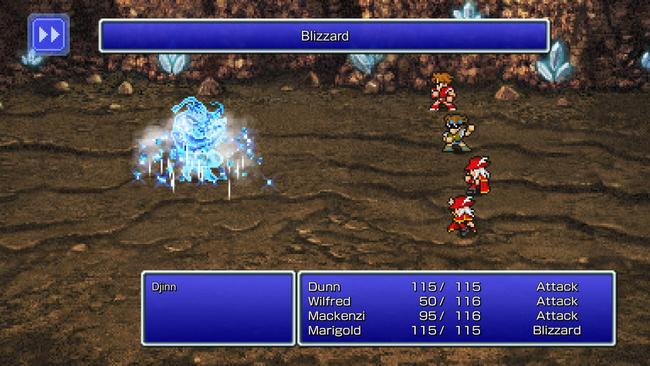
This next one is less of a technical issue and more a personal gripe. Call me old-fashioned, or even an old curmudgeon, but having eight-way movement just feels off to me. I found it to make for a strange disconnect, where it felt more like my character was just floating above the ground instead of treading on it. I realize this opinion will vary from person to person, but I do wish that I could turn off this feature and go back to the traditional four-directional movement instead.
So at the end of the day, where do, these Pixel Remasters sit in the pantheon of Final Fantasy remasters? I’d place them comfortably smack-dab in the center. They are leaps and bounds better than the mobile remasters of V and VI, but the lack of the bonus dungeons and content from the GBA and PSP remakes mean that Pixel Remaster versions of Final Fantasy 1 and 2 aren’t the best ways to play them.
Out of this first offering, I think the easiest one to recommend to long-time fans of this series is hands-down Final Fantasy 3. It is an experience that most English-speaking players haven’t been able to have before, and things are different enough from the 3D remake that it will give a great look at what the game originally was. Plus, the inclusion of the job system means this game has the most replayability.
I come away from Final Fantasy 1, 2, and 3 looking forward to the remaining games more than I did before. I appreciate the new features like the enhanced bestiary, the auto-combat feature, making grinding friendlier, and I LOVE the new soundtracks. But I hope they manage to address issues like the screen tearing and especially the font before the last three games release.
